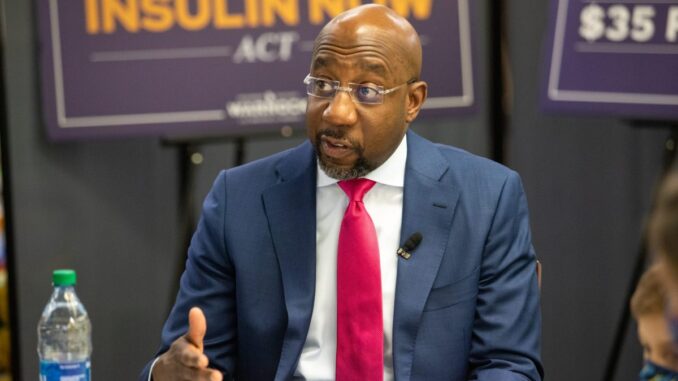

The Affordable Insulin Now Act, according to Senator Warnock, is a deferential plan. It does not matter if an individual is on private insurance or Medicaid, Medicare, or Medicare Advantage. It will cap the cost of insulin to $35 per month. He also said it does not matter if an individual is using the pens or vials.
“And all of these stories are moving in their own way,” Warnock said. “And they just give me even a greater sense of urgency to try to get it to the finish line and get it done. And so as I’m making my way back to DC, I know that I’ll be very focused on this. I think healthcare is a human right and serving something the wealthiest nation on the planet ought to provide to all of its citizens and look at the impact of insulin. Diabetes, particularly people in Georgia, is something that we ought to get.”

“ADA has endorsed legislation introduced by US Sen. Rev. Raphael Warnock creating a national co-pay cap on #insulin. Let’s do this thing! It’s time we make insulin affordable for millions of Americans!”
Most often, American insurance companies will steer their patients to utilize vials and syringes to inject insulin because it’s the cheaper option. A box of 100 syringes range from $11-$21. Vials range from $50-$100. However, this practice isn’t convenient because injections can be painful and difficult for people who are afraid of needles. Secondly, the injection site must be rotated frequently. Lastly, this method does come with a higher risk of hypoglycemic episodes for individuals with very low blood sugar.
Generally, most insulin users utilize the pens because it’s easier to transport and less painful than the syringes. However, the pens are more expensive. According to GoodRX, the Humalog KwikPens can cost over $600, and the recently released authorized generic can run over $300. Each pen contains 3 mL of insulin.
“Too many Georgians have or know someone who has diabetes, and too many live with the burden of treating this chronic condition with critical insulin that’s costing them more and more,” Warnock said in a statement last week. “At the same time, special corporate interests are seeing record profits, while everyday people are seeing record prices for drugs like insulin they need to live… Georgians should never have to choose between paying for life’s basic essentials or life-preserving medicines.”
The most expensive option is the insulin pump. It’s the most reliable method to deliver insulin. A pump delivers insulin via a catheter as it mimics the body’s normal release and production of insulin. An insulin pump is also more accurate than syringes and allows the individual more freedom in what and when to eat.
However, insulin pumps are not always covered by insurance. According to out-of-pocket costs for an insulin pump is around $6,000 out of pocket, plus another $3,000 to $6,000 annually for ongoing supplies, like batteries and sensors. However, the benefit to the pump is the individual can receive readings every five minutes to a connected smartphone app.
Warnock explained during the discussion that he had a mandate to help Georgians get better access to healthcare. He is also hopeful the Affordable Insulin Now Act will make it out of committee soon.
“I went to the Senate as we were passing the American Rescue Plan. I saw to it that we put billions of dollars in that piece of legislation to further incentivize Georgia to expand Medicaid. So I then wrote another piece of legislation, the Medicaid Saves Lives Act, which would allow citizens in states like Georgia that refused to expand Medicaid, to still access a Medicaid-like program.”
“What I learned at the time that I’ve been there is that I need to stay connected to the people and keep fighting for the people. And that’s what I intend to do.”

The most expensive option is the insulin pump. It’s the most reliable method to deliver insulin. A pump delivers insulin via a catheter as it mimics the body’s normal release and production of insulin. An insulin pump is also more accurate than syringes and allows the individual more freedom in what and when to eat.
However, insulin pumps are not always covered by insurance. According to out-of-pocket costs for an insulin pump is around $6,000 out of pocket, plus another $3,000 to $6,000 annually for ongoing supplies, like batteries and sensors. However, the benefit to the pump is the individual can receive readings every five minutes to a connected smartphone app.
Warnock explained during the discussion that he had a mandate to help Georgians get better access to healthcare. He is also hopeful the Affordable Insulin Now Act will make it out of committee soon.
“I went to the Senate as we were passing the American Rescue Plan. I saw to it that we put billions of dollars in that piece of legislation to further incentivize Georgia to expand Medicaid. So I then wrote another piece of legislation, the Medicaid Saves Lives Act, which would allow citizens in states like Georgia that refused to expand Medicaid, to still access a Medicaid-like program.”
“What I learned at the time that I’ve been there is that I need to stay connected to the people and keep fighting for the people. And that’s what I intend to do.”

Be the first to comment